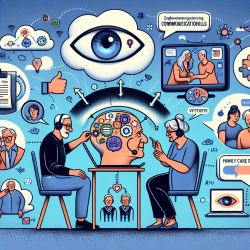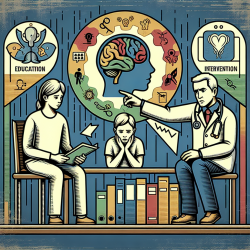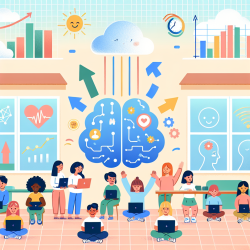As a speech-language pathologist committed to data-driven decisions, it is imperative to stay abreast of research that can significantly improve therapeutic outcomes for children. One such study, "Effectiveness of Noise-Attenuating Headphones on Physiological Responses for Children With Autism Spectrum Disorders," provides valuable insights that can be directly implemented in clinical practice.
Autism Spectrum Disorder (ASD) often comes with sensory processing challenges, particularly auditory hypersensitivity or hyperacusis. These sensory difficulties can result in heightened sympathetic nervous system activity, manifesting as problematic behaviors and distress. The study by Pfeiffer et al. (2019) evaluated the effectiveness of noise-attenuating headphones in reducing physiological stress in children with ASD in natural environments.
Study Overview
The study employed a single-subject multi-treatment design involving six children aged 8–16 years with various forms of Autism. Participants used both in-ear (IE) and over-ear (OE) noise-attenuating headphones across different phases. Electrodermal activity (EDA) data was collected using Empatica E4 wristbands, measuring skin conductance levels (SCL) and non-specific skin conductance responses (NS-SCRs).
Key Findings
The results indicated a significant reduction in both SCL and NS-SCR frequency during the intervention phases with noise-attenuating headphones compared to baseline. This reduction persisted regardless of environmental noise levels, suggesting a protective effect of the headphones against auditory stimuli perceived as noxious.
- Significant Reduction in Physiological Stress: The use of noise-attenuating headphones led to a marked decrease in SCL and NS-SCRs, indicating reduced physiological stress.
- Feasibility in Natural Environments: The study demonstrated that wearable sensors could effectively collect physiological data in real-world settings, supporting the feasibility of such interventions outside the laboratory.
- Improved Data Quality Over Time: Data quality improved as participants became more accustomed to the technology, highlighting the importance of familiarization and practice.
Implications for Practice
Implementing noise-attenuating headphones in therapeutic settings can offer a practical, non-invasive intervention to help children with ASD manage auditory hypersensitivity. Here are some actionable steps for practitioners:
- Introduce Gradually: Allow children to become familiar with the headphones in a non-threatening environment before using them in more challenging settings.
- Monitor and Adjust: Continuously monitor the child's physiological responses and adjust the use of headphones based on individual needs and preferences.
- Incorporate into Daily Routines: Encourage the use of noise-attenuating headphones during activities known to cause auditory distress, such as during car rides or in noisy classrooms.
Encouraging Further Research
While the findings are promising, further research with larger sample sizes and diverse populations is needed to validate these results. Practitioners are encouraged to contribute to this body of knowledge by conducting their own studies and sharing outcomes.
To read the original research paper, please follow this link: Effectiveness of Noise-Attenuating Headphones on Physiological Responses for Children With Autism Spectrum Disorders.










